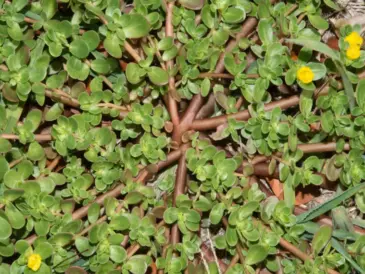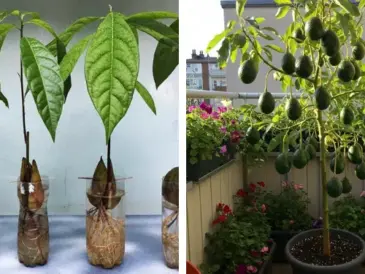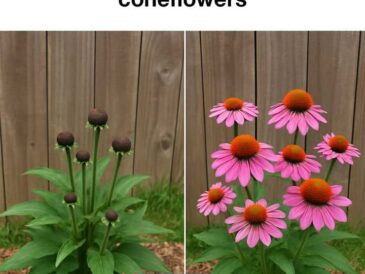When most gardeners are packing up for winter, experienced ones know that November is actually one of the best months to plant perennials – especially if you live in regions with mild or moderate winters.
The cool temperatures, moist soil, and reduced heat stress create the perfect environment for new roots to establish before spring.
Planting perennials in November means you’ll have stronger, healthier, and earlier blooms next season – both in pots and in your garden beds.
Why November Is the Perfect Month for Planting Perennials
While it might seem counterintuitive, fall (especially November) is one of the best times to plant. Here’s why:
- Cooler weather reduces stress on newly planted perennials.
- Warm soil allows roots to establish before the first frost.
- Moisture from fall rains keeps the soil consistently damp.
- Less competition from weeds gives perennials a strong start.
- Early planting ensures they’re ready to burst into growth once spring arrives.
You can plant both bare-root and container-grown perennials, as well as divide and replant existing ones during this time.
1. Lavender (Lavandula)
Lavender is a cold-hardy perennial that benefits from being planted in late fall, especially in well-drained soil. Its roots establish better in cool, dry conditions, preparing it for fragrant blooms in summer.
Planting Tips:
- Choose a sunny location or pot with drainage holes.
- Mix sand or gravel into the soil to prevent rot.
- Water lightly until established, then sparingly over winter.
Why it’s great for November: Lavender dislikes heat and humidity during planting. Cool autumn air helps roots adjust easily before dormancy.
2. Hellebore (Helleborus orientalis)
Known as the Christmas Rose, hellebores bloom in late winter to early spring, often pushing through snow.
Planting Tips:
- Grow in partial shade with moist, rich soil.
- Water regularly during dry spells.
- Mulch lightly to protect roots from frost.
Why it’s great for November: Planting hellebores in late fall gives them time to anchor deeply before winter, ensuring strong early blooms.
3. Coneflower (Echinacea purpurea)
Coneflowers are resilient, pollinator-friendly plants that thrive in nearly any garden. Planting them in November helps them settle in before harsh frosts arrive.
Planting Tips:
- Choose a sunny, well-drained spot.
- Avoid overwatering – coneflowers dislike soggy soil.
- Leave seed heads intact for winter bird food.
Why it’s great for November: Fall planting gives roots a head start, ensuring vibrant, tall blooms by midsummer.
4. Coreopsis (Coreopsis verticillata)
This cheerful, daisy-like perennial blooms profusely in summer and thrives even in poor soil.
Planting Tips:
- Plant in full sun.
- Use well-draining soil – sandy or loamy mixes are ideal.
- Cut back dead stems after frost.
Why it’s great for November: Cool temperatures help coreopsis adapt without transplant shock. It will rest through winter and explode with blooms in late spring.
5. Black-Eyed Susan (Rudbeckia hirta)
A classic cottage garden favorite, black-eyed Susan is a hardy perennial that tolerates cold well.
Planting Tips:
- Plant in full sun.
- Keep soil moist but not waterlogged.
- Mulch for winter protection.
Why it’s great for November: Roots grow actively in cool soil, preparing for vigorous flowering next summer.
6. Heuchera (Heuchera spp.)
Also known as coral bells, this foliage perennial adds vibrant color even in winter. Its leaves come in shades of red, silver, and green – ideal for decorative pots.
Planting Tips:
- Partial shade is best.
- Use rich, well-draining soil.
- Avoid overwatering during dormancy.
Why it’s great for November: Heuchera can handle light frosts and settles in well before hard freezes, making it a perfect late-season addition.
7. Dianthus (Dianthus barbatus)
Dianthus, or pinks, are compact, fragrant perennials that look beautiful in containers and borders.
Planting Tips:
- Choose a sunny location.
- Ensure soil drains well to prevent root rot.
- Trim dead flowers to encourage spring blooming.
Why it’s great for November: Cool soil encourages root development, and dianthus can tolerate light frost once established.
8. Creeping Thyme (Thymus serpyllum)
This aromatic groundcover thrives in cooler months and is perfect for filling spaces between pavers or in rock gardens.
Planting Tips:
- Plant in full sun.
- Use sandy, well-drained soil.
- Water lightly after planting.
Why it’s great for November: Thyme’s hardy roots establish quickly before the freeze and spread beautifully in spring.
9. Sedum (Sedum spectabile)
Sedum, or stonecrop, is nearly indestructible and ideal for containers or poor soil. Its thick, fleshy leaves store moisture, making it winter-tolerant.
Planting Tips:
- Plant in well-draining, sandy soil.
- Choose a sunny spot.
- Avoid overwatering.
Why it’s great for November: Sedum roots easily in cool conditions, preparing for stunning late-summer blooms that attract pollinators.
10. Shasta Daisy (Leucanthemum × superbum)
Shasta daisies are resilient bloomers that love to be planted in fall. By spring, they’ll produce cheerful white flowers that brighten any garden.
Planting Tips:
- Full sun and well-drained soil are essential.
- Water lightly after planting.
- Mulch to insulate roots over winter.
Why it’s great for November: Planting now allows daisy roots to establish deep in cool soil for strong stems next season.
11. Yarrow (Achillea millefolium)
Yarrow is an easy-to-grow, drought-tolerant perennial that thrives in pots and borders alike.
Planting Tips:
- Plant in sunny spots with dry to medium soil.
- Avoid rich soil – too much fertility reduces blooms.
- Prune after flowering to promote compact growth.
Why it’s great for November: Cool soil and low humidity allow yarrow roots to grow steadily without stress.
12. Daylily (Hemerocallis spp.)
Daylilies are one of the easiest and most reliable perennials to grow – tolerant of cold, drought, and neglect.
Planting Tips:
- Plant in full sun or light shade.
- Water thoroughly after planting.
- Add mulch to protect roots from frost.
Why it’s great for November: Roots establish during winter dormancy and burst into growth in early spring.
13. Columbine (Aquilegia vulgaris)
Columbine’s delicate, nodding flowers bring color to spring gardens. November planting ensures early rooting and a strong start.
Planting Tips:
- Choose partial shade and moist, well-drained soil.
- Space plants about 12 inches apart.
- Keep soil slightly damp.
Why it’s great for November: Cool temperatures and consistent moisture help columbine germinate naturally for spring blooms.
14. Foxglove (Digitalis purpurea)
Foxglove is a dramatic perennial with tall, bell-shaped flowers that attract bees and hummingbirds.
Planting Tips:
- Partial shade or filtered sunlight works best.
- Use rich, moist soil.
- Water occasionally through winter.
Why it’s great for November: Foxglove prefers cool conditions and will overwinter beautifully, rewarding you with tall, striking blooms next summer.
15. Lungwort (Pulmonaria officinalis)
Lungwort is a shade-loving perennial that produces early spring flowers in pink, blue, and violet tones.
Planting Tips:
- Grow in partial to full shade.
- Keep soil moist but well-drained.
- Mulch to protect shallow roots.
Why it’s great for November: Lungwort thrives in cool, damp conditions, making late fall the ideal time to get it settled in.
Tips for Planting Perennials in November
Check Your Hardiness Zone:
Make sure your chosen plants are hardy to your zone. Most listed perennials thrive in USDA Zones 4–9.
Prepare the Soil:
Loosen soil, remove weeds, and mix in compost for better drainage and nutrients.
Water Wisely:
Water deeply after planting, then reduce frequency as plants enter dormancy.
Add Mulch:
Apply a 2–3 inch layer of mulch to insulate roots and prevent frost heave.
Choose the Right Containers:
If planting in pots, use frost-resistant containers and raise them slightly off the ground to improve drainage.
Protect from Frost:
If heavy frost is expected soon after planting, cover young plants with burlap or cloches.
Planting perennials in November is one of the most overlooked gardening opportunities.
By taking advantage of the cool, moist conditions, you’re setting the stage for a healthier, more vibrant garden next year.




